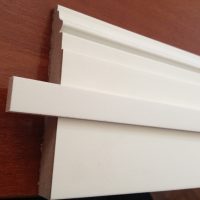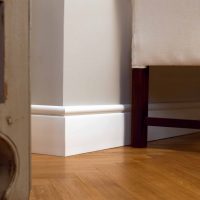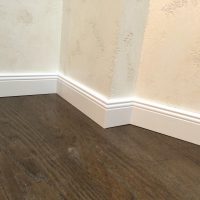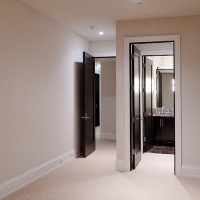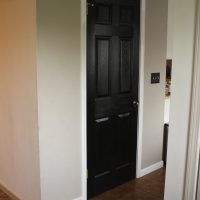White baseboard in the interior: photos, tips
The use of skirting boards in the interior has a long centuries-old history. It is impossible to imagine a modern house or apartment without the use of floor and ceiling fillets. These elements are not only practical, but also aesthetic, they give completeness and help in adjusting the visual perception of the space of the room. White baseboard in the interior is well suited for many design decisions and is very popular with most designers.

Light white baseboard in design

White baseboard wall

White baseboard in the interior
Content
The role of baseboards in the interior of a room
One of the final touches in the repair is the installation of fillets. Many people think that they are used with only one purpose - to close the joints between the walls and the floor or ceiling. In fact, he has much more functions.
Practical Functions:
- closes cracks and joints between walls and floor or ceiling;
- is a holder for flooring, for example, for linoleum or carpet;
- becomes a cable channel for laying wires.
- "Boot" is needed to prevent the appearance of contamination on the lower parts of the walls.
Installation of fillets for decorative purposes, is widely used in the repair of apartments and houses. Various types, colors, shapes and materials allow you to give the interior a finished look or make notes of a special design.
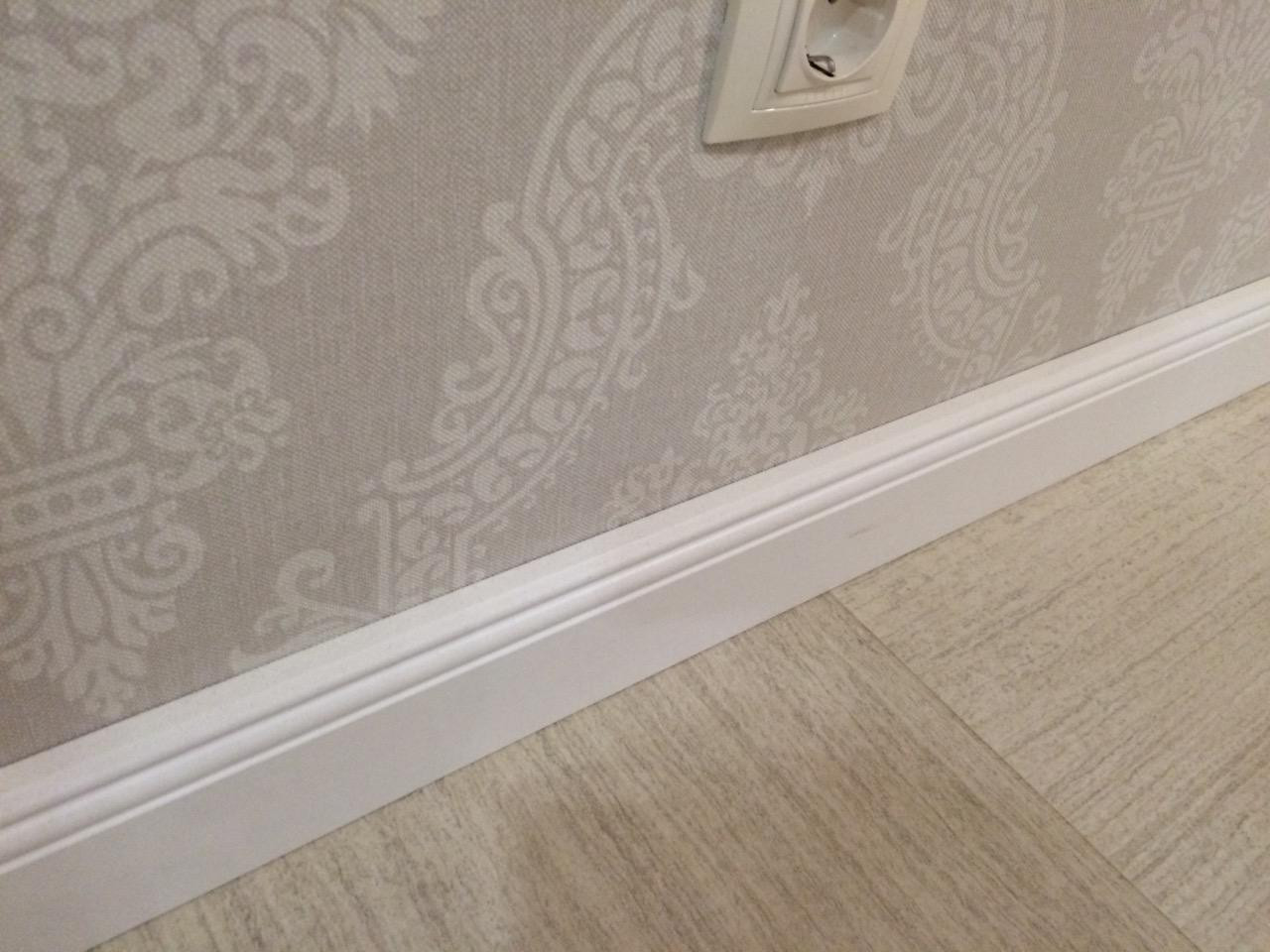
White baseboard wall

Light white baseboard in design
How to choose a skirting board
Today, the construction market presents a variety of types of fillets. They differ from each other in a variety of parameters, for example, according to location, material, purpose and other parameters. We’ll find out which one is better in our article.
Floor fillets are made of wood, plastic or MDF. Before the appearance of plastic products on the market, the most common were wooden fillets. They have not lost their relevance now. Wood is the most environmentally friendly material; its service life is from 15 to 25 years. For the manufacture of usually take an array of spruce, cedar or pine. Such products may possibly be varnished or stained, as well as painted in any color, depending on the overall color scheme.

White baseboard in the interior

White baseboard wall

Light white baseboard in design
They are used to frame the floor covered with laminate or parquet, as well as natural boards. The price is usually higher than for plastic products, which causes a decline in popularity in recent decades.
Plastic - are easy to install. Even a novice can handle their fastening. The weight of such products is small, complete with them are plugs, corner joints and joints. The color scheme is presented in a wide range, everyone can choose a color and texture at their discretion. There is no need for their coloring and special care, unlike wooden ones. In addition, internal channels allow you to lay wiring and thereby create an additional order. As for the shortcomings, one can note a low strength and low durability, any impact can provoke cracks and breaks. Such panels are practical for a floor covered with laminate, ceramic tiles, linoleum, carpet, should not be used for parquet or wooden boards.
Made from MDF, they are unpretentious in maintenance, do not attract dust, are quite inexpensive, but, like plastic ones, are not very durable. They are afraid of moisture, deform in excess moisture and require replacement.
Metal - rarely used, made of aluminum or stainless steel, more often used in rooms with high humidity and a high probability of contamination. In modern apartments they are installed in bathrooms, kitchens and hallways.

White baseboard in the interior
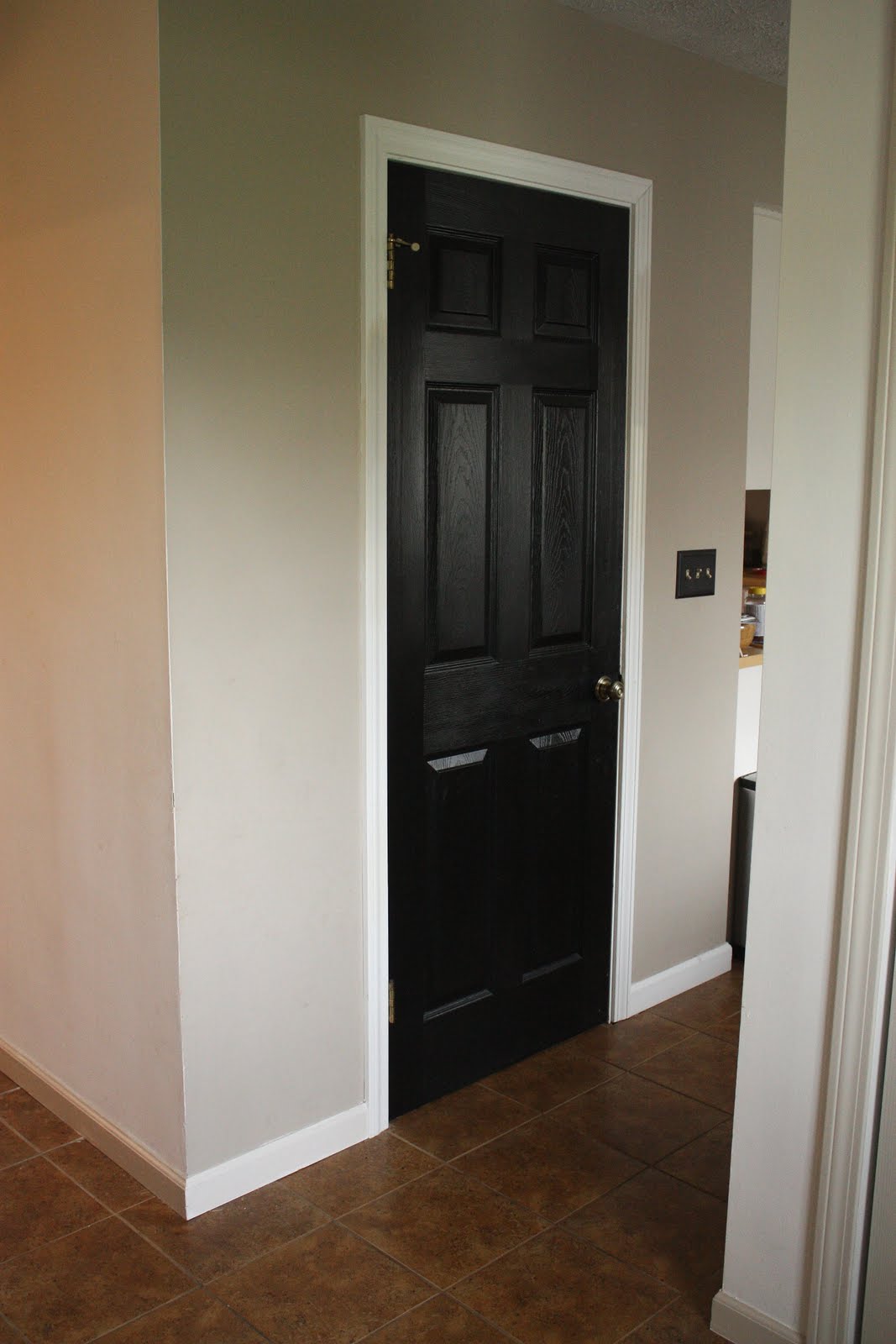
White baseboard wall
The floor profile has a height of 5 to 10 cm, the most popular is 6 cm. It allows you to close all joints and at the same time does not visually reduce the height of the walls. Wide 8-10 cm baseboards in the interior, as a rule, are made of plastic and used in large rooms with high ceilings. He gives grandeur. Its surface can be either smooth or decorated with protrusions, legs or patterns. The internal structure may include laying channels for wires and even for heating systems.
Ceiling profiles are designed to hide the joints between the ceiling and walls, in addition, they allow you to complete the design, visually control the area and give a special style.
Ceiling moldings have a long history, monarch palaces have been decorated with stucco moldings for many centuries, later similar, but less massive stuccos appeared in apartments dating back to the Stalin era. With the advent to our country of planned and similar construction, stucco molding was abandoned for many years. Modern designers again turned to stucco moldings and moldings 10-15 years ago and again returned to their former popularity.
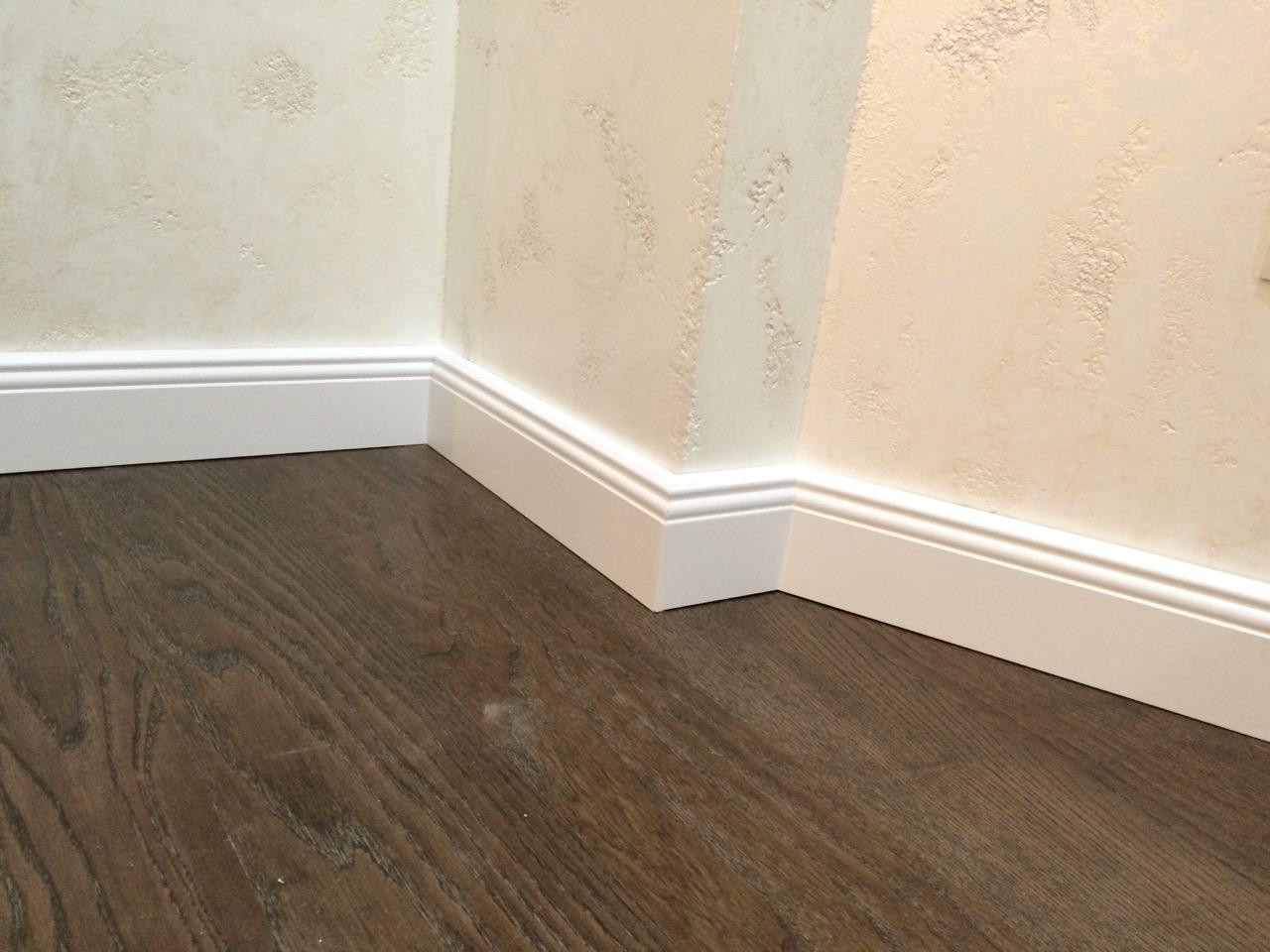
Light white baseboard in design

White baseboard in the interior
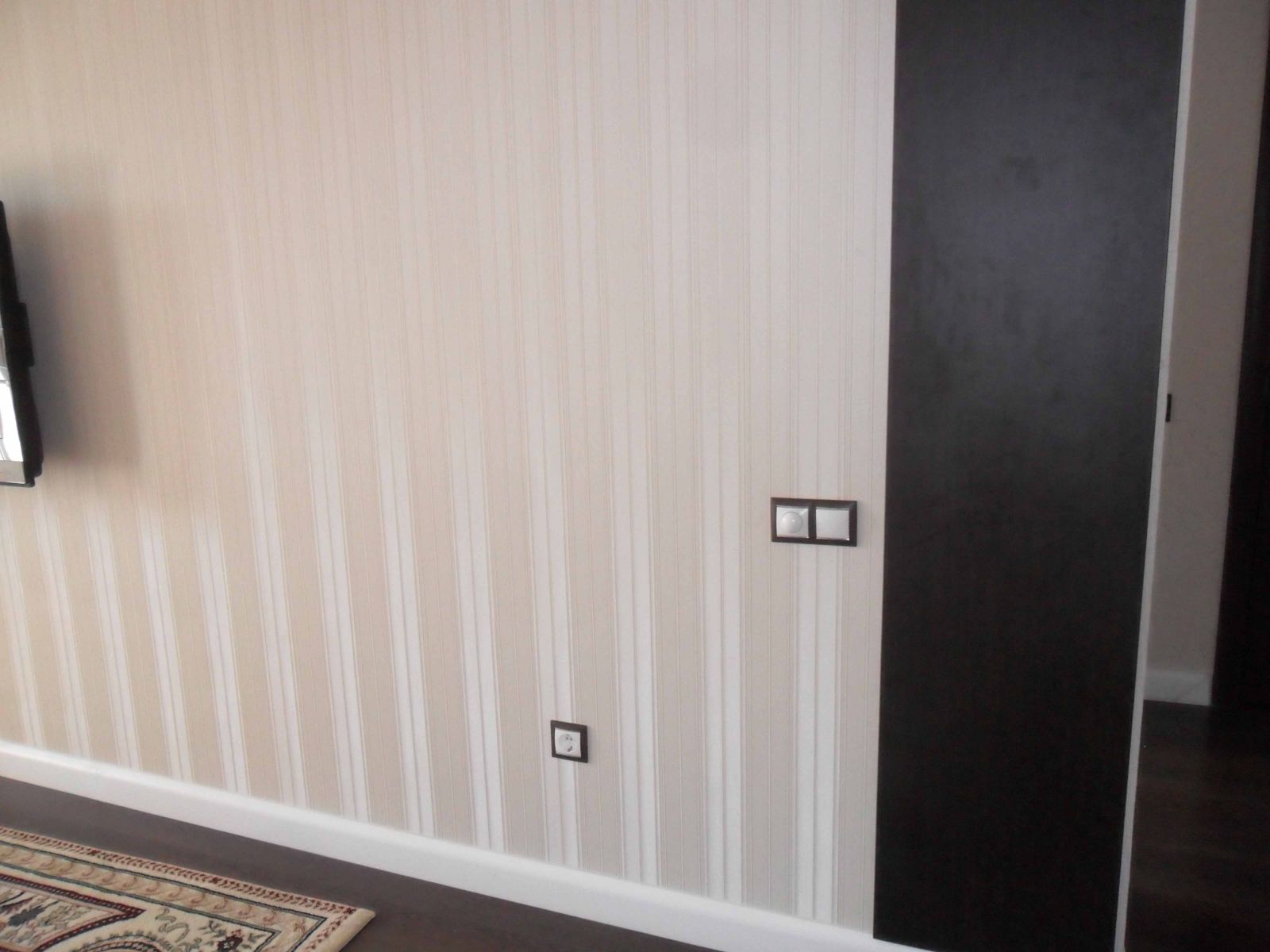
White baseboard wall
Fillet for ceilings are made of various materials, the cheapest is foam. Styrofoam stucco can be purchased at any hardware store at very low prices, however, they have several disadvantages. They are very fragile, even a slight pressure can leave a dent on them. They must be additionally coated with putty and painted, otherwise they will absorb dust and become very dirty. Due to their fragility, they cannot be washed, and besides, they are short-lived.
Expanded polystyrene fillets are not much more expensive than those made of polystyrene. Their main difference is that they are durable and at the same time quite flexible, they are usually made in white and do not require additional coloring.

Light white baseboard in design

White baseboard in the interior
Wooden ceiling moldings belong to an expensive segment, and not everyone can afford them. They are very heavy, so their installation is quite time-consuming, all joints must be sawed by hand, and even small errors can ruin the appearance. They are also susceptible to decay and the formation of fungi, with high humidity quickly become unusable.
Decorative baguettes, stucco moldings and fillets are most often used in design solutions for wall decoration. For these purposes, usually made of polyvinyl chloride, they are decorated with decorative elements or embossed, can be convex or concave. Such fillets are great for decorating frames, wall niches, and are used when working with wall panels and ceramic tiles.
A variety of colors and textures allows you to embody even the most daring design ideas.

White baseboard wall

Light white baseboard in design

White baseboard in the interior
Interior solutions
Examples of white ceiling and floor skirting in the interior are increasingly found in projects of designers. Where such decoration is appropriate and what it is combined with, we will figure it out further.
The white floor plinth in the interior, combined with dark walls or floors, gives clarity, delimits space and indicates a certain severity.This color for the floor profile will be the perfect solution for apartments in a classic style. It will blend perfectly with the white door and give an elegant look.
White fillets are often installed in bright rooms, such as the Swedish style. They combine well with light shades of the floor and walls, visually increase the space, without focusing on clear lines.

Light white baseboard in design

White baseboard wall
The visual perception of the room depends on the width of the white plinth in the interior, if the white color is contrasted with respect to the walls and floor, you need to pay attention to the area and height of the walls. In small, narrow rooms with low walls, you need to select low ones, this will ensure the preservation of space, and will not reduce it. If the room is large and the walls are high, you can use a wide white baseboard.
For rooms in bright colors, a white skirting board of any width can be used, since it will not introduce restrictions on the visual perception of the interior.
The combination of a white baseboard and white doors is a classic. But to dilute such a light design, color contrasts must be introduced. For example, the color of the walls or floor, or bright elements of decor: furniture, accessories, panels and paintings on the walls.

Light white baseboard in design

White baseboard in the interior

White baseboard wall
For the ceiling, most often resort to white baguettes. Depending on the interior solutions, their width and design varies. Thin white skirting boards are suitable for modern style solutions. If you want to give your room a classic look or embody the Baroque style, you can safely fasten wide white skirting boards with or without ornaments.
Colored ceiling moldings are rarely mounted, since they must be fully combined with the color of the walls or ceiling, if you do not plan to change them every time you change the wallpaper or paint the walls, it is better to refuse color options.

Light white baseboard in design

White baseboard in the interior
Five rules of the bright side of a white skirting board
Using a white skirting board, remember the following rules.
- It should be not only aesthetically beautiful, but also practical. Choose materials that are easy to clean and do not absorb dirt and dust.
- The color should be in harmony with other colors in the decoration or become a contrast, you should not choose a white baseboard if it does not match the color of the walls, floor and doors.
- Think about the functional features, if you need to hide wires from your eyes, choose fillets with cable channels.
- Choose the material from which the white skirting board is made depending on the floor covering.
- The white baseboard should not reduce the space of the room, pay attention to its width and choose based on the height of the walls and area.
Video: Installing a plastic white baseboard for painting


